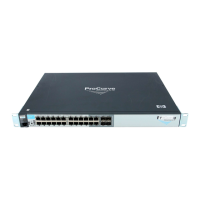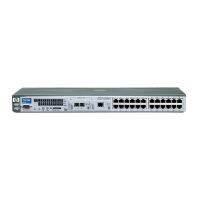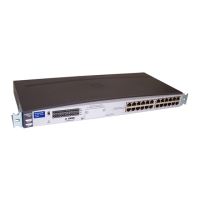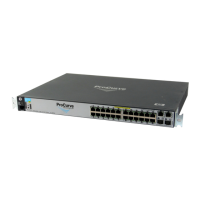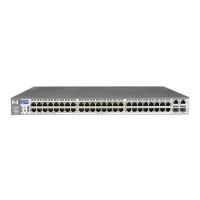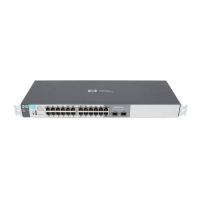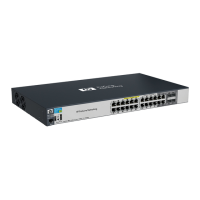5-4
Alerts
Interpreting the Alert Log - Automatic Fault Finding
Excessive late
collisions
Description: Late collisions (collisions detected after transmitting approximately 64 bytes) were detected
on this port.
Possible Causes:
• An overextended LAN topology
• Half/full duplex mismatch
• Misconfigured or faulty device connected to the port
Actions:
1. Verify that the network topology conforms to IEEE 802.3 standards. Insert bridges or switches, if needed,
to extend the network topology.
2. Check the directly-connected device for mismatches if half/full duplex operation (half duplex on the
switch and full duplex on the connected device).
3. If this port is 100Base-T, make sure the cable connecting to the port is Category 5 or better.
4. Check for faulty cabling, transceivers, and NICs.
High collision or
drop rate
Description: A large number of collisions or packet drops have occurred on the port.
Possible Causes:
• an extremely high level of traffic on this port
• Half/full duplex mismatch
• A misconfigured or malfunctioning NIC or transceiver on a device connected to the port
• A topology loop in the network
Actions:
1. Use a network monitoring device or application to determine the traffic levels on the affected segment.
If needed, consider subdividing that segment with switches or bridges, or moving high-traffic devices
to their own switch ports.
2. Check the directly-connected device for mismatches in half/full duplex operation (half duplex on the
switch and full duplex on the connected device).
3. Check for a misconfigured NIC or transceiver (for example, a transceiver configured for “loopback test”
or “SQE test”).
4. Verify that there are no topology loops in your network. If not enabled, you may also enable spanning
tree. See the Switch Configuration menu.
Excessive
broadcasts
Description: An excessively high rate of broadcast packets were received on the port. This degrades the
performance of all devices connected to this switch.
Possible Causes: This is usually caused by a network topology loop, but can also be due to a malfunctioning
device, NIC, NIC driver, or software application.
Actions:
1. Verify that there are no topology loops in your network.
2. Find and correct any malfunctioning devices or NICs on the segment.
3. Find and correct any malfunctioning applications on devices on the segment.
Table 5-1. Common Faults
Fault Description, Cause and Actions

